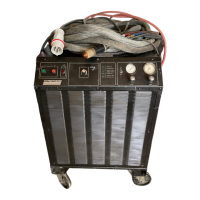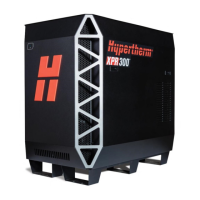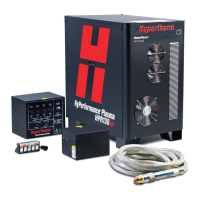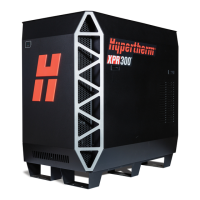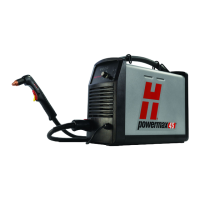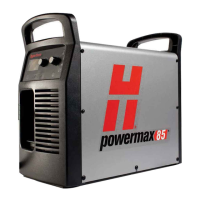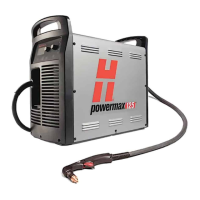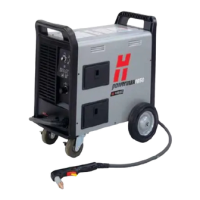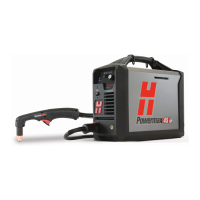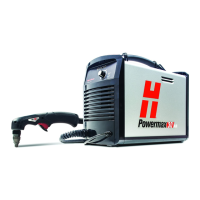80 MAXPRO200 Instruction Manual 807700 Revision 1
Operation
Handheld cutting
Specifications
Consumable selection and gas settings
Refer to Cutting parameters on page 86 for consumable and process information.
Starting a cut
1. Start cutting from the edge of the workpiece (see figure below) unless you must pierce. For the best results, the
nozzle orifice should overlap the edge of the workpiece about halfway, and the torch (arc) axis should be
perpendicular to the cut surface.
Note: When cutting, make sure that the sparks are coming out of the bottom of the workpiece. If they are spraying
on top of the workpiece, you are moving the torch too fast, or you do not have sufficient power to fully penetrate
the workpiece.
2. Hold the torch lightly on the metal or just off the metal and drag the torch across the metal. The arc transfers once the
torch is within 6 mm (1/4 inch) of the workpiece.
CAUTION!
SPARKS AND HOT METAL CAN INJURE EYES AND BURN SKIN. When firing the
torch, sparks and hot metal will spray out from the nozzle. Point the torch away
from yourself and others. Always use the proper protective equipment. See
Safety on page 9 for more information.
Materials Mild steel, stainless steel, and aluminum
Current 50A, 130A, and 200A
Plasma gas types
Air, O
2
,
N
2
Shield gas types
Air,
N
2
Torch weight (without lead) See Specifications on page 33
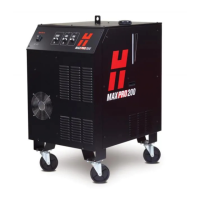
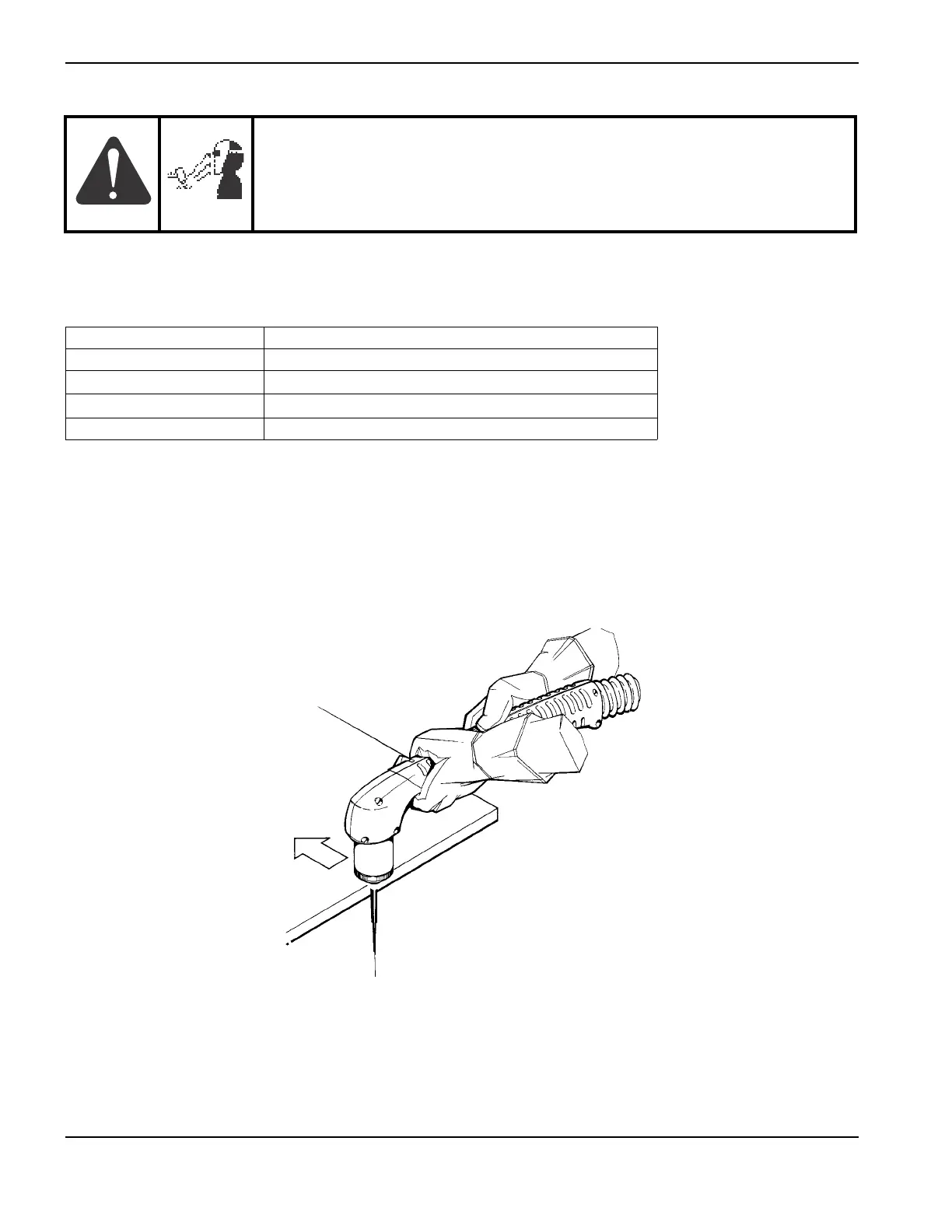